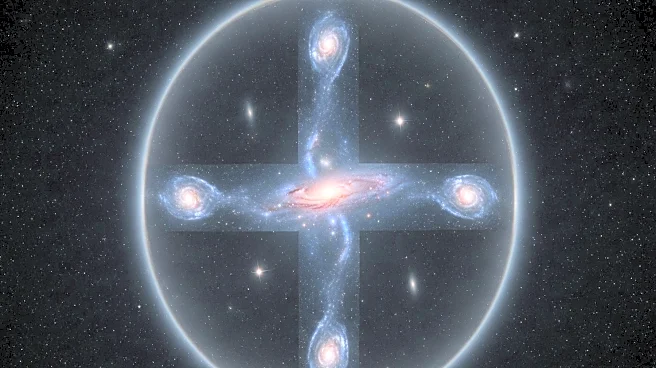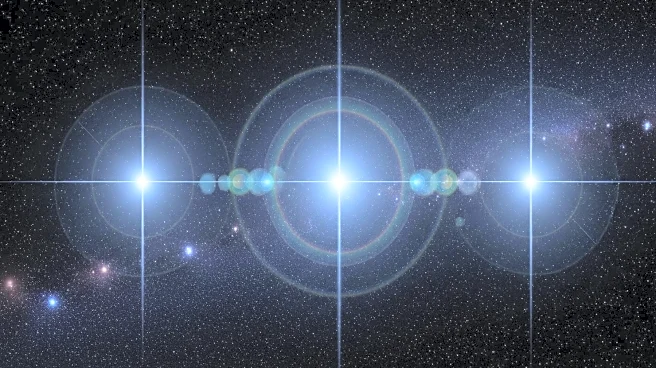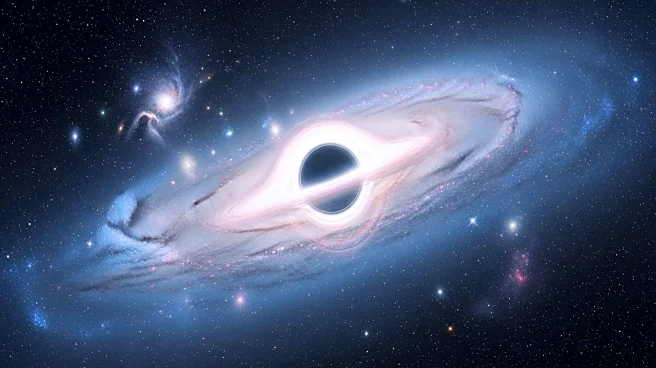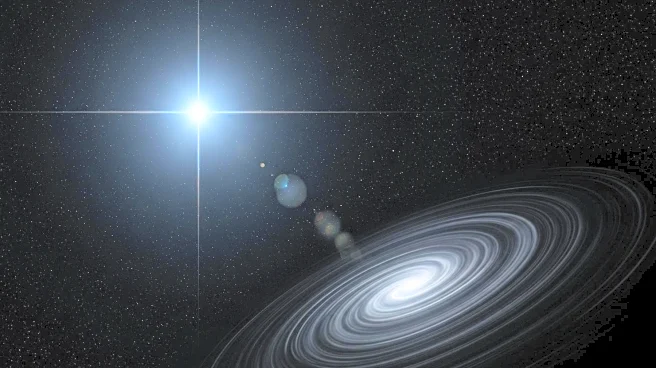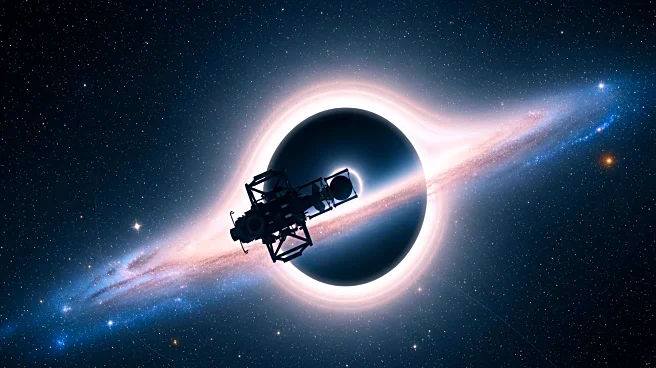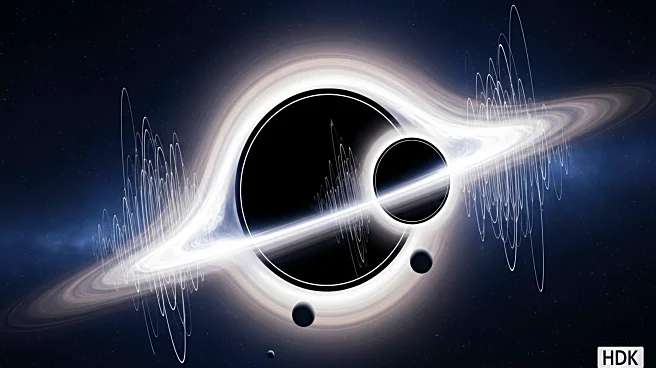What's Happening?
An international research team has utilized advanced computer simulations to investigate how faint radio signals from the early Universe could reveal the properties of dark matter. The study, published in Nature Astronomy, highlights the potential of future Moon missions to detect these signals. The research, led by Hyunbae Park from the University of Tsukuba, focuses on small gas clouds from the cosmic Dark Ages, a period before the formation of stars and galaxies. The simulations show how these gas clumps, influenced by dark matter, could provide insights into the mass of dark matter particles. The study suggests that lunar-based radio observatories could distinguish between warm and cold dark matter scenarios, offering a clearer understanding of this mysterious substance.
Why It's Important?
The findings have significant implications for understanding dark matter, which constitutes about 80% of the Universe's matter. Determining the mass of dark matter particles is crucial for developing theoretical models in particle physics. The research provides a pathway for future lunar missions to contribute to this understanding, as the Moon offers a radio-quiet environment ideal for detecting the elusive signals. This could lead to breakthroughs in astrophysics and enhance our knowledge of the Universe's structure. The study also underscores the growing international interest in lunar exploration, combining scientific discovery with technological advancement.
What's Next?
The research supports the feasibility of lunar-based radio observatories, which could be realized in the coming decades. Nations like Japan are actively pursuing such missions, with projects like Tsukuyomi aiming to deploy radio antennas on the Moon. These efforts could lead to significant advancements in our understanding of dark matter and the early Universe. The study provides essential guidance for maximizing the scientific return of these missions, potentially leading to new collaborations and technological innovations in space exploration.
Beyond the Headlines
The study highlights the potential for lunar missions to address one of the greatest unsolved problems in modern physics. By focusing on an era before the complexities of star and galaxy formation, the research offers a unique approach to studying dark matter. This could lead to a paradigm shift in how we explore the Universe, emphasizing the importance of international collaboration and innovation in space science.


